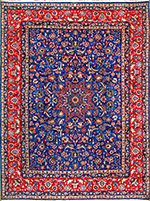Textiles Studies

Textile Research Works
Date of this Version
2014
Document Type
Article
Citation
Proceedings of Bridges 2014: Mathematics, Music, Art, Architecture, Culture, pp. 321-324.
Abstract
An often overlooked characteristic of Sinan’s architectural production of the 16th century is the use of low screening walls and windows carved of marble with pierced openwork or tracery to let in light and allow for air circulation. Typically these screens display polygonal networks often with intersecting polygons. This paper explores aspects of these carved patterns, which have antecedents in earlier Islamic architecture, attributing particular significance to this architectural feature in the works of Sinan and three successors whom he had trained. These slabs (and their counterparts in forged iron) may be considered études, serving as opportunities for the training of the royal corps of architects in what was then called the “science of geometry,” documenting a sustained concern with polygonal networks half a century before publication of Kepler’s Harmonices Mundi in 1619.
Included in
Art and Materials Conservation Commons, Art Practice Commons, Fiber, Textile, and Weaving Arts Commons, Indigenous Studies Commons, Museum Studies Commons

